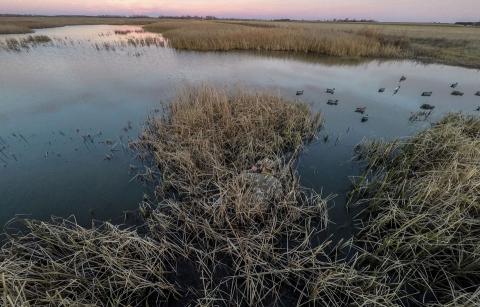David Hawkins
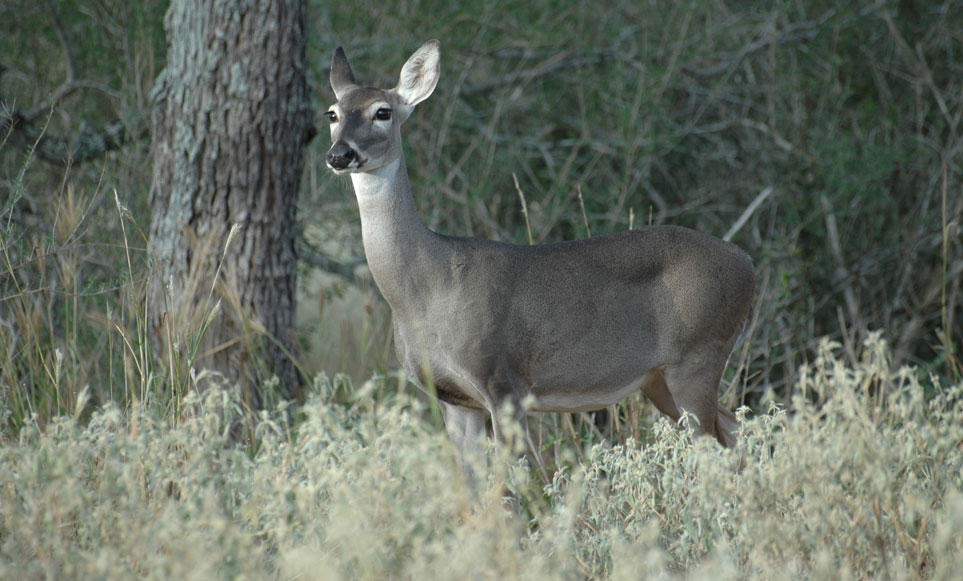
There is no question that the harvesting of antlerless deer is part of a solid deer management plan. With that understood, shouldn’t it make sense there should be some logic in which antlerless deer should be removed from a herd. A quick survey asked a dozen hunters what factors they used to select a doe for harvest. The criteria varied from age to size, and believe it or not, a few still said it’s wrong to harvest does at all.
Since the scientific name for a whitetail is Odocoilous Virginianus, I figured Virginia may just be the best place to start. The state is a metro-complex to the east and country and farmland to the west. Just like so many states, the constant loss of habitat in Virginia is responsible for high deer populations in places. In these areas deer numbers need to be reduced. Matt Knox, Deer Project Coordinator with the Virginia Department of Game and Inland Fisheries (VDGIF) provides the following insights.
“Antlerless deer need to be harvested when there is a need to control or reduce deer herd density,” Knox said. “This may sound counter intuitive to many deer hunters who typically want more and more deer. Although most hunters think in terms of bucks and antlers, it is the female segment of the herd that determines most of the differences in deer populations.”
For management purposes, there are only three deer population management objectives: increase the deer population, stabilize the deer population or reduce the deer population. Once an objective is chosen, a deer management strategy must be designed to move your deer herd toward the desired objective.”
Two of the three approaches require antlerless deer be taken: Increase the deer herd by limiting the female deer kill; Stabilize the deer herd by using a “balanced” either-sex deer kill; Reduce the deer herd by increasing the female deer kill. When a hunting club or land and wildlife manager decides a doe harvest is necessary, the choice of age group then becomes the question. Which doe should be taken?
“It depends upon their deer management objective. If a property has a significant need to reduce the deer density, probably any antlerless deer that provides a clean shot should be taken,” Knox said. “Many clubs today practice some form of voluntary quality deer management (QDM) where young bucks are passed up and antlerless deer kill levels are moderate to high. Over the last couple of decades, this management approach had developed a practice of not killing fawns. This is primarily in an effort to avoid killing button buck fawns. In my opinion, many persons and clubs have taken this “protect the button bucks” mantra too far by fining. I would suggest if a property kills many antlerless deer, killing a few button bucks is not a problem. In my opinion, it is the cost of doing business.”
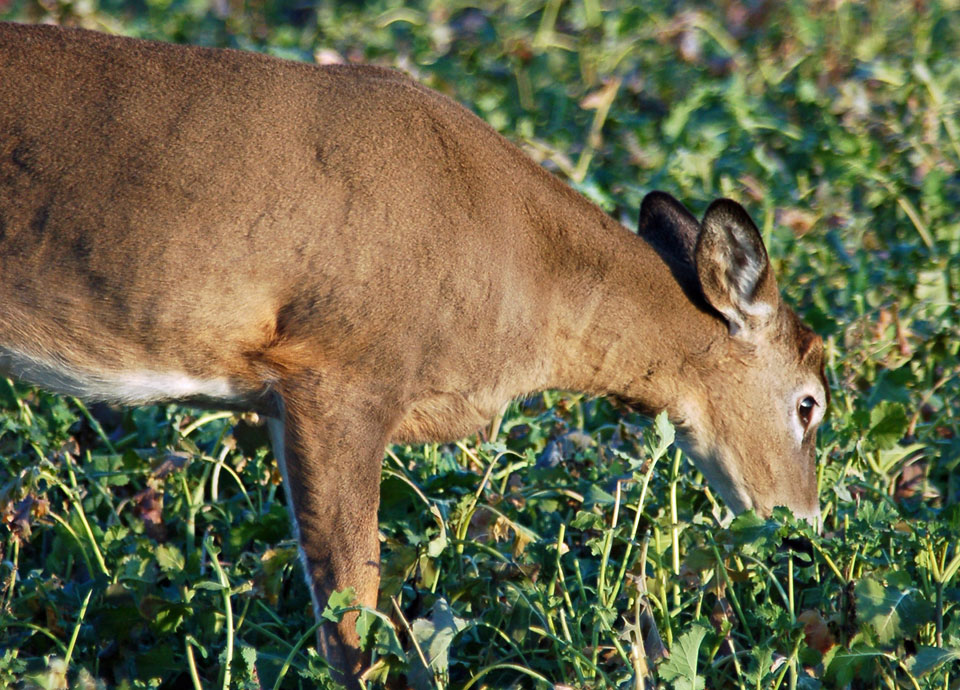
Knox adds that size, shape, and behavior play a key role in aiding a hunter with which anterless deer to harvest. With practice, most hunters should be able to learn and discern three types of antlerless deer; fawns, young does and old does. QDMA has an excellent poster on these criteria - more on that in a moment. Shape and size is not the only signs to watch for when choosing a doe to shoot.
“Behavior is just as good a key as size and shape,” Knox said. “Within a doe matriarchal family group the oldest doe will be the dominant animal. For example, if you ever see a group of deer walking very deliberately through the woods in single file moving from A to B, the dominant doe will always be leading. Being able to identify this dominant deer can be very important.”
“In urban situations where sharpshooters are trying to remove all of a family group, identifying this dominant female is critical. If a subordinate is shot first, all the other deer will immediately run off. If the dominant deer is killed first, all the animals will just mill around and they all can be killed in short order. With no one in charge, no one knows who is supposed to make a decision,” Knox said. “The same logic applies in the deer woods. Nearly every deer hunter has killed an antlerless deer before and all the other deer, including older animals, just mill around the area. That hunter has likely just killed the dominant doe. Conversely, nearly every deer hunter has killed an antlerless deer before and all the other deer are gone immediately. That hunter just killed a subordinate doe.”
The previously mentioned QDMA poster is titled “Identifying Anterless Deer.” It is one of several excellent color illustrations every deer hunter or club should have posted in a place of prominence for all to see. Others include Judging White-tailed Bucks, and Judging a Harvested Jawbone to Age Deer.
Lindsey Thomas, editor of Quality Whitetails and QDMA spokesman advises, “Estimating the sex and age of anterless deer is critical for the collection of reliable observation data and for any Quality Deer Management program that involves selective doe harvest and protection of buck fawns. The ability to separate live anterless deer into two general age groups (fawns and adults) is a necessary skill for any successful antlerless harvest program.”
Body shape and size and head shape and size are the two most defining criteria when judging antlerless animals. A mature doe will have a longer body, while a juvenile deer will have a body that is boxier. Think of them as a suitcase compared to a briefcases. The mature doe has the long shape of a large suitcase, while the young deer will resemble a square box or briefcase.
Fawns and juvenile deer will have short snouts, whereas an adult has an elongated nose. Adults will also have darker tarsal, compared to no staining on yearlings. Older does will have very defined musculature, Adults have longer necks. This may be exhibited while feeding. A fawn or yearling may have to spread its front legs to forage on the ground. Not so with a full grown doe.
“Don’t be fooled by the first deer to enter a food plot or one that is traveling alone,” Thomas said. “The likelihood of that deer being a button buck is very high. Wait until several deer are in somewhat close proximity so body and head shapes and sizes can be judged. Use quality optics to check for short-antlered spikes among the group. The more deer are studied, the better the hunter becomes at judging age.”
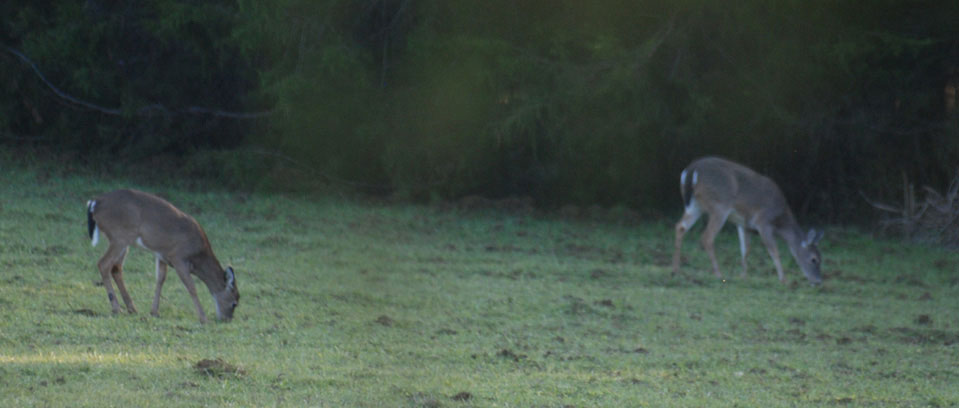
In deer-rich Mississippi, the annual antlerless harvest was altered from five per season per hunter statewide to just three per season per hunter. Additional numbers are allowed where Deer Management Programs merited the additional harvest. On public lands, even more stringent rules apply with doe harvest limited to archery-only and primitive weapons seasons. So why the change, and how have other deer heavy states addressed the issue? The answers may surprise you.
Giles Island is a hunting lodge right out of the pages of a William Faulkner hunting story. The big woods of the Mississippi River are a cathedral where free-roaming deer have mitigated floods and hunters for centuries. Governors, actors and common folk from across the country have visited there for one of the true slices of history in Mississippi folklore; the island is home to the sandbar where Jim Bowie and his knife became household names.
Jimmy Riley is the manager of Giles Island and the deer herd there is a credit to him. As part of the Mississippi Department of Wildlife, Fisheries and Parks (MDWFP) Deer Management Assistance Program (DMAP), the staff of pros at Giles Island exercise best management strategies for harvesting anterless deer.
“Our clients come to the club with the hopes of harvesting a true trophy of a lifetime, and in many cases they do just that,” Riley said. “As part of the normal package, a hunter is offered three deer – a trophy buck, a management buck, and a doe. We coach hunters on what to look for in each case and often send a pro with the hunter to assist with the judging.”
In the early season, we look for does without fawns. Before shooting a doe, we’ll look at a lot of things. If a doe is fat, with a large sagging belly and back she is likely old and needs to be removed. With good optics, it’s easy to look for an udder – most visible when the doe is facing away from the shooter. If the udder can be seen, we pass on that doe until later in the season. By mid-November, fawns have lost their spots and can survive on their own, so any doe a hunter chooses is fair game.
“We have a quota of anterless deer to kill each year,” Riley said. “If we get behind on the quota, we’ll start to shoot yearlings. In the past, we have followed the recommendations of the biologists and feel we have a stable herd of quality animals.
Mississippi Deer Program manager William McKinley had this to say about antlerless selection and harvesting:
“There was a time when a mature doe in Mississippi weighed just 90 pounds. There were just more deer than the habitat was able to carry. The anterless limits were increased and adjusted giving hunters an increased opportunity. In those areas where anterless harvest was done properly, individual weights have rebounded to 115-120 pounds or more.”
Mississippi is a state of extremes in deer habitat. The rich alluvial soil of the Mississippi Delta and the Black Belt soil of the northeastern portion of the state produce the biggest deer. The sandy hills and coastal plains, not being as fertile have smaller deer.
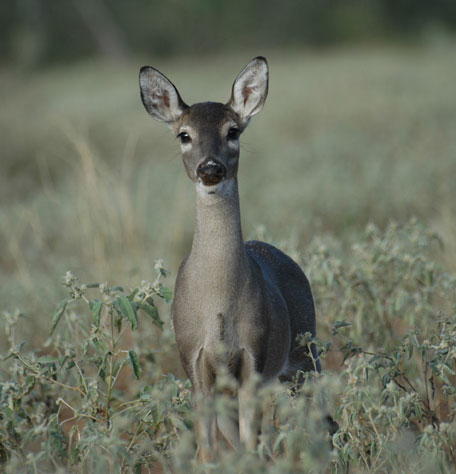 “Where deer are overabundant we encourage doe harvesting early on to ease the stress on the environment,” McKinley said. “Most of our fawns drop in June and July, so most fawns are 90-days old when archery season kicks off in October. Since bow hunters have a unique perspective on their target, the culling of older animals becomes easier. Older does tend to have longer than usual noses and swayed backs. My best advice is this, if it feels right take it. If there are doubts don’t. She’ll be there later.”
“Where deer are overabundant we encourage doe harvesting early on to ease the stress on the environment,” McKinley said. “Most of our fawns drop in June and July, so most fawns are 90-days old when archery season kicks off in October. Since bow hunters have a unique perspective on their target, the culling of older animals becomes easier. Older does tend to have longer than usual noses and swayed backs. My best advice is this, if it feels right take it. If there are doubts don’t. She’ll be there later.”
Accurate harvest data is critical to deer management, especially the jaw/age. Accurate ages give an idea of the age structure (probably more important for antlered bucks), survival rate, mortality rate, recruitment, etc.
Bill Baker, a hunting lease manager and biologist for Westervelt Inc. points to a perfect herd balance as a one to one ratio for does and bucks. He also points out, that ratio is almost impossible to achieve, especially among free-ranging herds.
“Two or three does for every buck is about as good as a land/wildlife manager can hope for,” Baker said. “Some of our properties have had high deer density, and a doe a day was called for to remedy that. Now, some properties are more balanced and the anterless deer harvest has been adjusted accordingly.”
“Philosophies regarding antlerless deer harvest in 2017 have changed considerably since before 2000. Before, deer biologists used to recommend harvesting as many antlerless deer as you can see, plus a few more,” Auburn University professor Steven Ditchkoff said. “It was during a time of extremely high deer densities, and biologists were concerned whether or not they would ever reduce density to a more healthy level. Since that time, on most properties, we have come to realize lower densities that are much more in line with what biologists would recommend from a quality deer perspective.”
Ditchkoff added that biologists have also come to recognize that coyotes are a much more important factor in driving deer density than they were in the 70s and 80s. As a result, coyote predation on fawns, /our-obsession/blogs/predator/coyotes-impacting-deer-fawns at least in the Southeast, is being factored into antlerless harvest quotas where it had never been considered an important factor to consider previously (because it wasn’t). Today, the Auburn University deer program, strongly recommends assessing fawn recruitment rates, in addition to other more traditionally measured deer population parameters and condition indices, before establishing antlerless harvest quotas. Failure to factor in fawn recruitment rates can lead to, and has led to on some properties, deer densities much less than desired. In extreme and rare circumstances, deer populations can be driven to a low enough level that complete elimination of antlerless harvest may not be enough for the population to recover to desirable levels. With that being said, antlerless harvest is still an extremely important deer management tool, and should be a factor in every management program.
Management is an ongoing process.
One point every agency and operation stresses is that herd management is fluid. Habitat, environmental conditions, hunting pressure, disease and predation are just a few of the factors to be considered when setting bag limits. Harsh winters in northern states may result in die-offs as deer yard-up in snow too deep to allow foraging. In the South, mild winters may result in less daylight deer movement resulting in fewer deer being harvested. Either of these could skew the numbers up or down.
If you are a land owner or property manager, the best advice is to incorporate a wildlife agency professional in the decision making process. Provide the very best food and cover you can, and then keep a journal of weather conditions, harvests and sightings. Over time, patterns will emerge that will allow you to make smart choices in this portion of herd management. You will shoot the right number of deer on the right days, and feel you have made the proper selection.
















